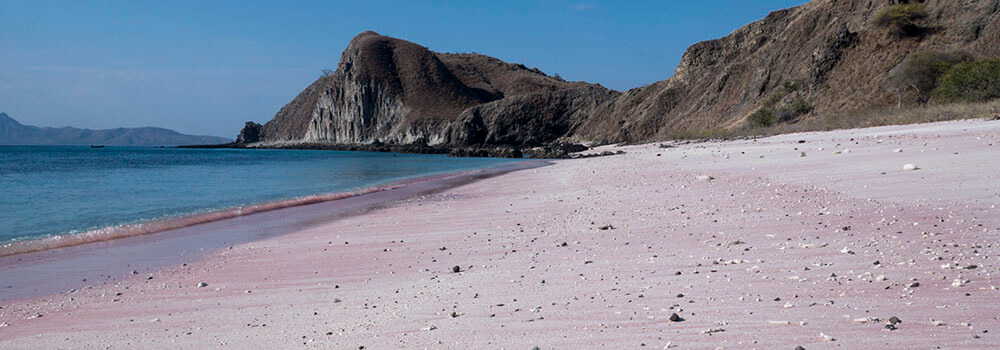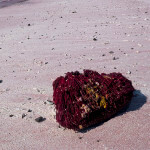
Snorkeling the pinkest beach in Komodo
There are more than a few pink beaches throughout the Indo-Pacific. The famous ‘Pink Beach’ is on Komodo Island in Komodo National Park. Though it may be famous, I would argue that it is not the pinkest.
Pink beaches form where there is an abundance of the soft coral known as pipe organ coral (Tubipora musica) in the shallow waters that front the particular beach. Pipe organ coral is one of the few corals that form a hard, calcareous skeleton. The name, pipe organ, comes from the long, thin calcareous tube that houses an individual polyp. As the polyps divide, each new tube created by the new polyp, attaches to the existing tubes—via horizontal canals—and ultimately this is how the colony is developed. In many ways, this is not unlike how hard corals grow and produce their skeletons and colonies.
The area in which the skeleton of the pipe organ corals differs from hard corals is in the color. Hard corals create a white skeleton whereas pipe organ coral creates a bright red one. The red may be a function of how the iron oxides are incorporated into the skeleton as it is being created.
- Pipe organ coral…
- Pipe organ skeleton…
- Tiny grains of sand…
The skeletons of pipe organ coral are very delicate and easily break, especially when the polyp dies. Heavy wave action can fragment the colony into tiny pieces and waves, tides, and currents end up depositing much of the material onto the nearby beach. As they further erode on the sane, the tiny pieces of red skeleton mix with the white calcium carbonate to create a pinkish hue to the sand.
Pipe organ coral tends to make up a large percentage of the soft coral diversity in many of the shallow coral gardens, especially those in front of beaches, in Komodo National Park. I started this blog with a mention about the famous Pink Beach on Komodo Island. It is probably the most often visited beach in the park, but as I also wrote, I do not believe it is the pinkest. That honor goes to the pink beaches of Padar Island (the smallest of the three main islands that make up Komodo National Park). All of the photos on this page were taken there and the beaches are often so pink, that the ebb and flow of water along the shoreline is often colored red rather than blue or green. We can’t wait to get back to visit these remarkable beaches again!
Want to see these amazing beaches for yourself? Join us on one of our Komodo snorkeling trips!



